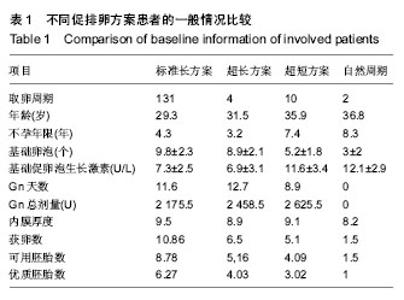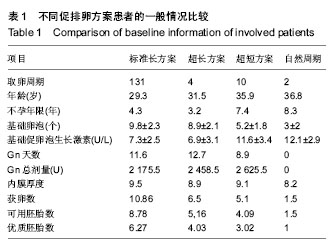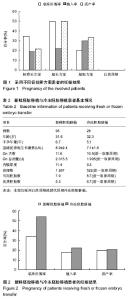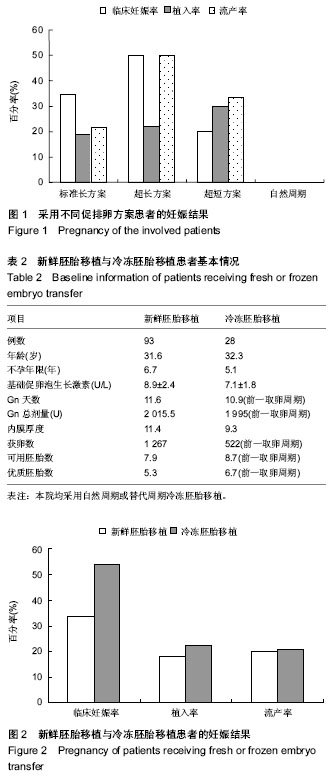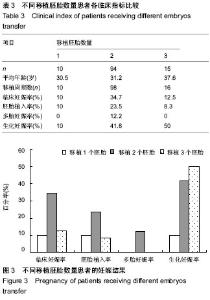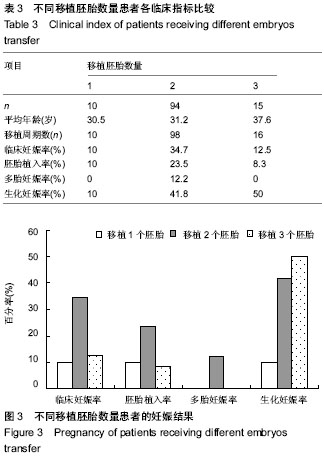| [1] 丘映,谭秀群. 卵胞浆内单精子显微注射-胚胎移植的研究进展[J].广西医学,2002,24(3):347-350.
[2] Tomás C, Orava M, Tuomivaara L, et al.Low pregnancy rate is achieved in patients treated with intracytoplasmic sperm injection due to previous low or failed fertilization in in-vitro fertilization.Hum Reprod. 1998;13(1):65-70.
[3] Merchant R, Gandhi G, Allahbadia GN.In vitro fertilization/intracytoplasmic sperm injection for male infertility. Indian J Urol. 2011;27(1):121-132.
[4] Basille C, Frydman R, El Aly A,et al.Preimplantation genetic diagnosis: state of the art.Eur J Obstet Gynecol Reprod Biol. 2009;145(1):9-13.
[5] 唐莉,彭林. 人体外受精-胚胎移植中体外培养改良的研究进展[J]. 国外医学:计划生育分册,2001,20(4):218-221.
[6] Gardner DK.Changes in requirements and utilization of nutrients during mammalian preimplantation embryo development and their significance in embryo culture. Theriogenology. 1998;49(1):83-102.
[7] Gruber I, Klein M.Embryo culture media for human IVF: which possibilities exist?J Turk Ger Gynecol Assoc. 2011;12(2): 110-117.
[8] 张梦苑,陈柯屹,腊晓琳,等.新鲜胚胎与冷冻胚胎移植在体外受精周期中疗效比较的Meta分析[J].中国组织工程研究,2013,17(53): 9245-9250.
[9] Labarta E,Martinez-Conejero JA, Alama P,et al.Endometrial receptivity is affected in women with high circulating progesterone levels at the end of the follicular phase:a functional genomics analysis.Hum Reprod.2011;26(7):1813-1825.
[10] Aflatoonian A,Oskouian H,Ahmadi S,et al.Can fresh embryo transfers be replaced by cryopreserved-thawed embryo transfers in assisted reproductive cycles?A randomized controlled trial.J Assist Reprod Genet,2010;27(7):357-363.
[11] Shapiro BS,Daneshmand ST,Garner FC,et al.Evidence of impaired endometrial receptivity after ovarian stimulation for in vitro fertilization:a prospective randomized trial comparing fresh and frozen-thawed embryo transfer in normal responders. Fertil Steril,2011;96(2):344-348.
[12] Whittingham DG, Leibo SP, Mazur P.Survival of mouse embryos frozen to -196 degrees and -269 degrees C.Science. 1972;178(4059):411-444.
[13] Wilmut I, Rowson LE.The successful low-temperature preservation of mouse and cow embryos.J Reprod Fertil. 1973;33(2):352-353.
[14] Willadsen SM, Polge C, Rowson LE,et al.Deep freezing of sheep embryos.J Reprod Fertil. 1976;46(1):151-154.
[15] Whittingham DG, Adams CE.Low temperature preservation of rabbit embryos.J Reprod Fertil. 1976;47(2):269-274.
[16] Bilton RJ, Moore NW.In vitro culture, storage and transfer of goat embryos.Aust J Biol Sci. 1976;29(1-2):125-129.
[17] Rall WF, Fahy GM.Ice-free cryopreservation of mouse embryos at -196 degrees C by vitrification.Nature. 1985;313 (6003):573-575.
[18] Liebermann J, Nawroth F, Isachenko V, et al.Potential importance of vitrification in reproductive medicine.Biol Reprod. 2002;67(6):1671-1680.
[19] Woods SE, Qi P, Rosalia E, Chavarria T,et al.Laser-assisted in vitro fertilization facilitates fertilization of vitrified-warmed C57BL/6 mouse oocytes with fresh and frozen-thawed spermatozoa, producing live pups.PLoS One. 2014;9(3): e91892.
[20] Kasai M, Komi JH, Takakamo A,et al.A simple method for mouse embryo cryopreservation in a low toxicity vitrification solution, without appreciable loss of viability.J Reprod Fertil. 1990;89(1):91-97.
[21] Dasiman R, Rahman NS, Othman S, et al.Cytoskeletal alterations in different developmental stages of in vivo cryopreserved preimplantation murine embryos.Med Sci Monit Basic Res. 2013;19:258-266.
[22] Kasai M, Mukaida T. Cryopreservation of animal and human embryos by vitrification.Reprod Biomed Online. 2004;9(2): 164-170.
[23] Willadsen SM.Factors affecting the survival of sheep embryos during-freezing and thawing.Ciba Found Symp. 1977;(52): 175-201.
[24] Nakagata N.High survival rate of unfertilized mouse oocytes after vitrification.J Reprod Fertil. 1989;87(2):479-483.
[25] Fuku E, Fiser PS, Marcus GJ, et al.The effect of supercooling on the developmental capacity of mouse embryos. Cryobiology. 1992;29(3):428-432.
[26] Otoi T, Tachikawa S, Kondo S,et al.Developmental capacity of bovine oocytes frozen in different cryoprotectants. Theriogenology. 1993;40(4):801-807.
[27] Vajta G, Holm P, Kuwayama M,et al.Open Pulled Straw (OPS) vitrification: a new way to reduce cryoinjuries of bovine ova and embryos.Mol Reprod Dev. 1998;51(1):53-58.
[28] Abe H, Yamashita S, Satoh T,et al.Accumulation of cytoplasmic lipid droplets in bovine embryos and cryotolerance of embryos developed in different culture systems using serum-free or serum-containing media.Mol Reprod Dev. 2002;61(1):57-66. |
